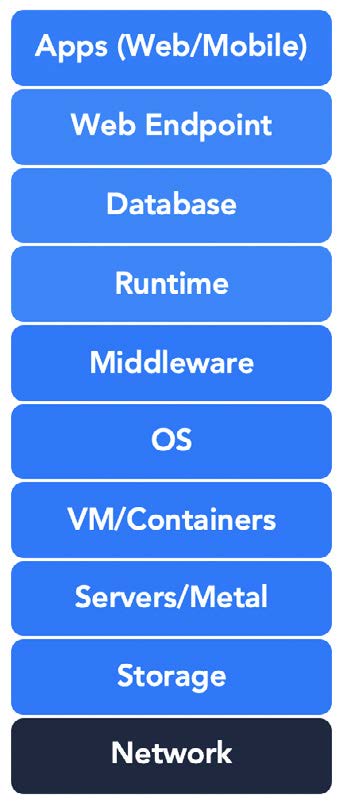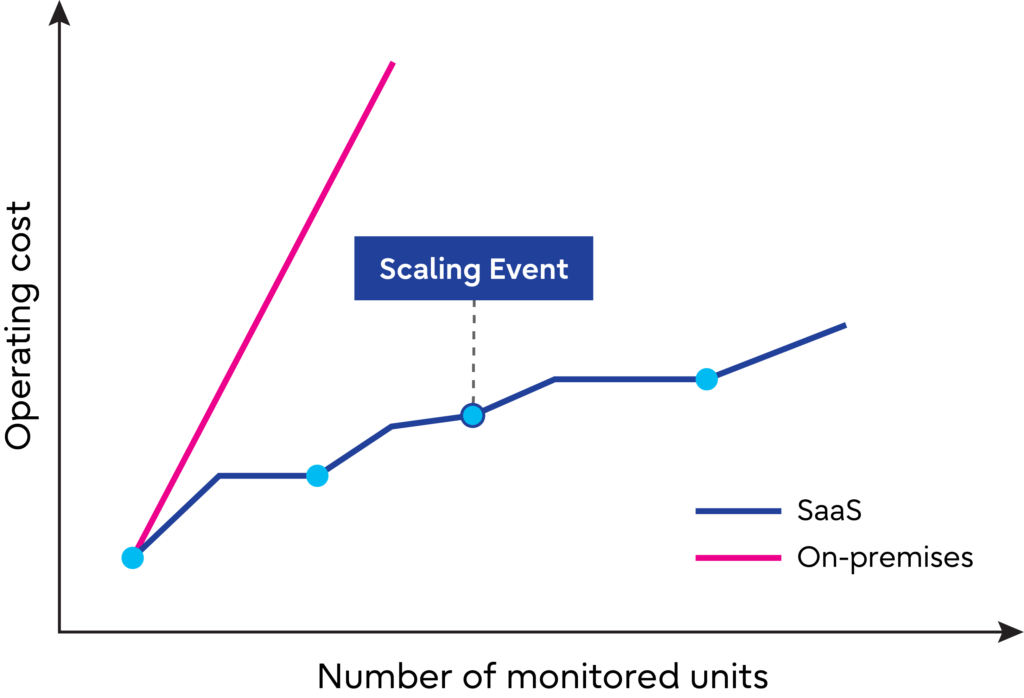
The digital infrastructure supporting your business has transformed. No longer a completely controlled environment, networks are increasingly distributed among public cloud, private cloud, and operator-owned infrastructure.
The predominantly on-premises monitoring tools of yesteryear were designed to focus on smaller, localized footprints rather than a modern digital infrastructure. Now, however, monitoring tools must be flexible, scalable, and intelligent, as well as capable of monitoring any type of infrastructure no matter where it resides. Today’s network monitoring tools must also provide a consistent and responsive user experience.
10. Breaking operational silos
Investments in monitoring tools over the years have all-too-often created “tool sprawl,” such that no single tool can resolve all the issues. As a result, valuable data is now siloed among the applications, compute infrastructure, and networking infrastructure. Insight+ can remove those siloes, creating a robust and unified operations foundation for your network.
The Infrastructure Operating System (IOS) model consists of ten layers shown in Figure 1, and their scale and complexity are continuously growing. A comprehensive monitoring platform is needed to provide role-based monitoring capabilities and correlate data between and among the different layers of the digital infrastructure, enabling personnel to quickly and accurately pinpoint the location of a problem, significantly reducing Mean Time to Detection (MTTD) and Mean Time to Resolution (MTTR).

9. Hybrid infrastructure needs hybrid monitoring
Today’s infrastructure is hybrid in nature, with different types of applications supporting an organization – business-to-customer/consumer, business-to-employee, and business-to-business. Back-office, productivity, and unified communication applications may be running as Software-as-a-Service (SaaS), while custom applications may be cloud-based, running in Amazon Web Services (AWS), Azure, or Google Cloud. Some applications may still be running on-premises rather than migrating to a cloud environment.
It’s now possible to create a software-defined data center without investing a penny in hardware, making the infrastructure dynamic, but also complex to monitor. Managing this infrastructure effectively requires a sophisticated, centralized monitoring platform that understands the complexity of your infrastructure and continuously looks for issues. The chosen monitoring platform must make the infrastructure visible in near-real time and support the specific needs of each team.

8. Experts do the job for you
The focus of your operations team should be driving domain-specific business value. To achieve this, they need tools to monitor the digital infrastructure. Through Insight+, Fujitsu delivers a world-class monitoring platform that constantly works to the benefit of your business. By offering this platform as a service, Fujitsu delivers sophisticated capabilities without the distractions of downloads, installation, upgrades, availability, scale, performance, security, and all the other intricacies involved in setting up the monitoring platform infrastructure. Fujitsu uses constant innovation and customer collaboration to provide an unparalleled experience.
7. Taking advantage of economies of scale in the cloud
Running a monitoring product on-premises is analogous to running your own home security servers. Minimum hardware requirements result in excess spending, and continuity of service is jeopardized because there is always a chance that the security system itself will go down at a critical time. By contrast, a cloud-based system is always available, ensuring continuity.
6. Monitoring is probably not your core competency
A monitoring system is a mission-critical source of information about your infrastructure and requires dedicated personnel managing it. The efficiency and smooth functioning of your business is directly related to the health and availability of the network monitoring system. A well-designed monitoring system is more complex than the individual systems it is monitoring, because it streams data from multiple types of hardware and software within your organization, correlating information and analyzing the data to find issues. Over time, the monitoring platform becomes a big data platform requiring a well-managed platform and environment.
In today’s world, a cloud-based monitoring solution that can scale to meet the demands of your network footprint is necessary to manage the sheer volume of data—not to mention meet customers’ SLA requirements. Fujitsu partners with best-in-class monitoring products and combines them with Fujitsu’s managed and engineering services to provide the monitoring capabilities and availability required by your applications and infrastructure.
5. You can focus your team on what really Matters
Your operations team needs to focus on the core competency of your business by measuring the effects of changes in infrastructure and how they affect changes in business metrics. A monitoring system should be a tool for the operations team to ensure business continuity, requiring as little maintenance as possible so as not to distract from their core mission. Employing a cloud-based monitoring platform that runs 24/7 allows your operations group to focus on what really matters—maintaining customer SLAs.
4. For the same reasons you use Salesforce.com, Office 365, and Amazon Web Services (AWS)
Cloud is here to stay and most organizations are exploring ways to take advantage of multiple clouds. If you use platforms such as Salesforce.com, Workday, Office 365, AWS, and Azure, you are already sending highly secure information into the cloud. A mature and certified SaaS platform utilizes the standards followed by cloud providers, and will improve as the underlying cloud technology evolves to address new demands. The decision-making process for selecting a SaaS monitoring provider is similar to that used in selecting any other SaaS provider.
3. Automatic upgrades eliminate labor-intensive upgrade projects
With traditional licensed software, every upgrade requires a rigorous upgrade process including spinning up a project team, conducting risk analysis, and then ensuring the upgrade is completed during specific upgrade windows when systems can be temporarily offline. Ultimately, you either skip versions or never upgrade, creating security risks. Fujitsu’s cloud-based monitoring gives you the choice of automatic upgrades and lets you control the process based on your needs, thereby reducing security risks while ensuring maximum continuity and control during the upgrade process.
2. Reduced cost and better ROI
On-premises, DIY monitoring is going to be more costly than a managed cloud solution. While hardware and software costs make up a mere fraction of overall monitoring system expenses, indirect costs like backup & restore, failover, risk, feature advancements, and opportunity cost play a much larger role. Over time, your licensed, on-premises monitoring system ROI will fall behind cloud-based solutions.
1. The power of one – always latest and greatest
A cloud-based, managed, pay-per-use monitoring solution guarantees you get the latest tools and highest performance at all times with automatic, transparent upgrades and enhancements. A managed cloud-based solution keeps improving over time and you directly benefit from that. You only have to choose the features you want to use and the platform works as a central, always-current monitoring system that automatically scales with your infrastructure.
Fujitsu implements Insight+ solutions that are globally scalable and always available, ensuring a good fit with any network ecosystem, so that you can focus on your core competencies and grow your business.